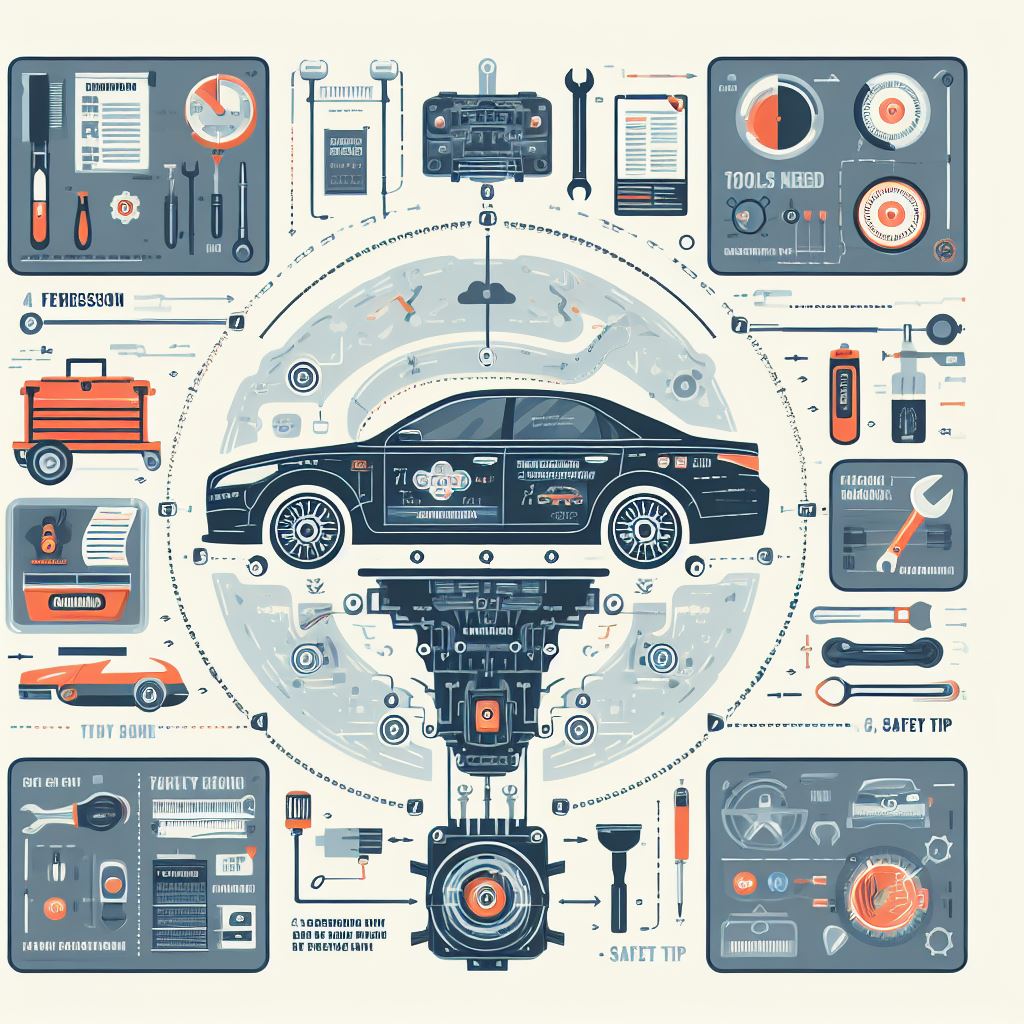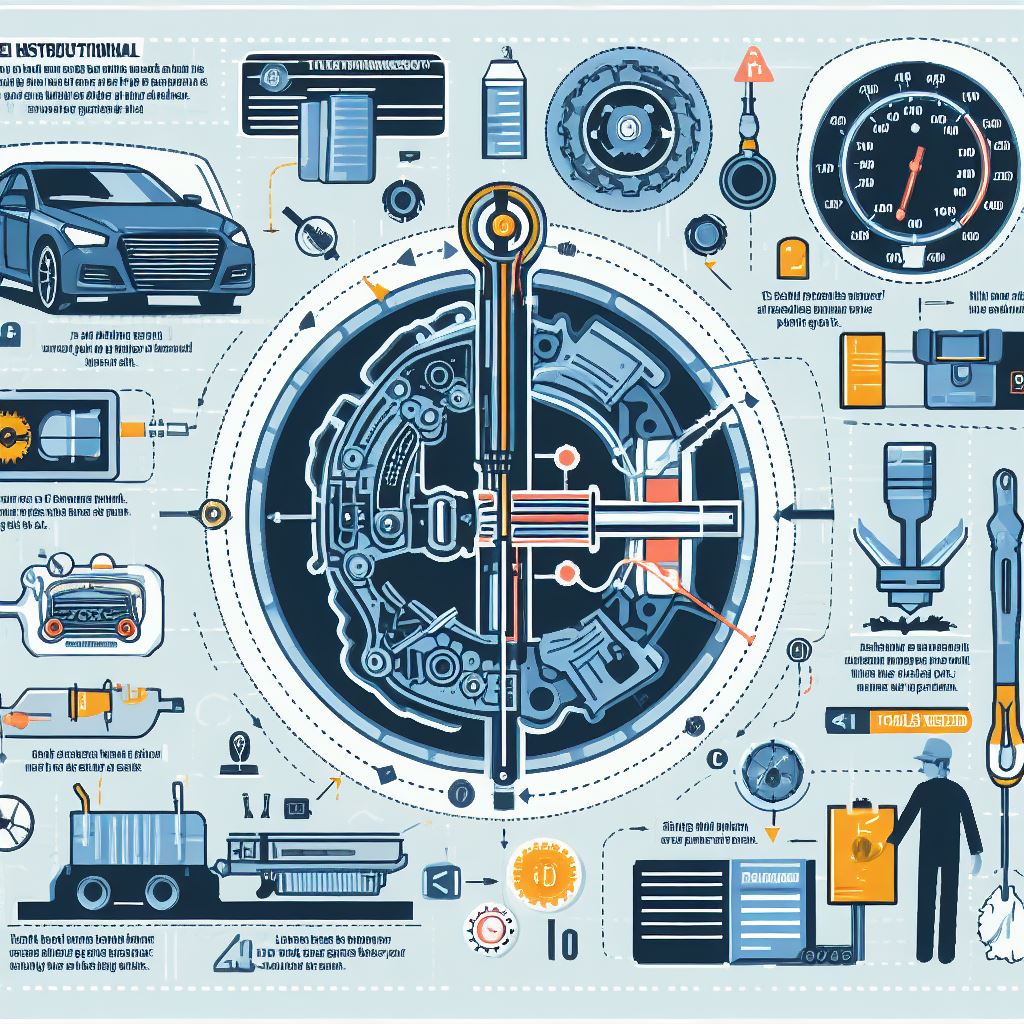In the world of automotive maintenance, certain tasks often go unnoticed but play a critical role in ensuring the longevity and performance of your vehicle. One such task is the transmission flush. While it might not be as well-known as an oil change or tire rotation, a transmission flush is an essential part of keeping your car or truck running smoothly.
In this article, we’ll delve into the importance of a transmission flush and why it should be a part of your regular vehicle maintenance routine. We’ll explore how this seemingly minor procedure can have a significant impact on the health of your vehicle’s transmission system, preventing costly repairs and ensuring that your car remains in optimal condition. So, let’s dive into the world of transmission maintenance and understand why it matters for your vehicle.
Why Transmission Flush is Important
- Over time, the transmission fluid can become contaminated with dirt, debris, and metal shavings from normal wear and tear.
- This can lead to decreased performance, increased wear and tear, and even transmission failure.
- This is where a transmission flush comes in.
Benefits of a Transmission Flush
Have you noticed a decrease in performance or strange noises coming from your engine? It may be time for a transmission flush. This important maintenance procedure helps keep your car running smoothly and can save you from costly repairs down the road. In this article, we will discuss the importance of transmission flushes and why you should make it a regular part of your vehicle’s maintenance.
From understanding the function of your transmission to the benefits of a flush, we will cover everything you need to know to keep your car running at its best. So buckle up and get ready to learn why transmission flush is a crucial part of car maintenance.
During the flush, a special machine is used to pump out the old fluid and push in the new fluid, completely cleaning out the system. This process is important because, over time, transmission fluid can become dirty and contaminated with debris, causing it to lose its effectiveness. Your car’s transmission is responsible for transferring power from the engine to the wheels, allowing your car to move.

It also helps regulate the speed and direction of your vehicle. Without a properly functioning transmission, your car may experience a range of issues, from difficulty shifting gears to a complete breakdown. That’s why it’s important to keep your transmission well-maintained, and a transmission flush is a key part of that.
The benefits of a transmission flush are numerous. First and foremost, it helps to extend the life of your transmission. By removing old, dirty fluid, you prevent damage and wear to the internal components of your transmission.
This can save you from costly repairs or even a full transmission replacement. Additionally, a flush can improve the overall performance of your vehicle, resulting in smoother shifting and better fuel efficiency. So when should you get a transmission flush? It is recommended to have one done every 30,000-60,000 miles, depending on your vehicle’s make and model.
When Should You Get a Transmission Flush
Have you ever wondered why your car’s transmission system needs regular maintenance? You may have heard about transmission flushes but may not fully understand their significance. Well, transmission flushes are an essential part of maintaining your vehicle’s health and performance. This process involves draining out the old transmission fluid and replacing it with fresh, clean fluid.
It may seem like just another routine maintenance task, but the benefits of a transmission flush go beyond just keeping your car running smoothly. In this article, we will explore the reasons why transmission flushes are important and why you should not neglect this critical aspect of car maintenance. So buckle up and get ready to learn all about transmission flushes and their significance.
Before we dive into the importance of transmission flushes, let’s first understand what it is and how it differs from a regular transmission fluid change. A transmission flush is a process of completely draining out all the old transmission fluid from the system and replacing it with new fluid. This is usually done using specialized equipment that pumps out the old fluid and pumps in the new one.

In comparison, a regular transmission fluid change only drains out a portion of the old fluid and replaces it with new fluid. While both are essential for maintaining your transmission’s health, a flush ensures a more thorough cleaning of the system. Ensures Proper Lubrication One of the primary functions of transmission fluid is to lubricate the various components of the transmission system.
Without proper lubrication, these components can grind against each other, causing damage and leading to costly repairs. Over time, transmission fluid can break down and become contaminated with debris, reducing its lubricating properties. A transmission flush removes all the old, contaminated fluid and replaces it with fresh fluid, ensuring that your transmission’s components are well-lubricated and protected from wear and tear.
Improves Performance and Fuel Efficiency As mentioned earlier, old transmission fluid can become contaminated and lose its effectiveness over time. This can have a direct impact on your car’s performance and fuel efficiency. With a transmission flush, you are essentially giving your transmission a fresh start, allowing it to operate at its optimal level.
How to Get a Transmission Flush
Why Transmission Flush is Important Transmission flush is an essential maintenance procedure that car owners often overlook. This vital process involves draining out old transmission fluid and replacing it with new, clean fluid. It is recommended to be done every 30,000 to 60,000 miles, depending on the type of vehicle and driving habits.
However, many people question the necessity of this service and wonder if it is just a gimmick to make them spend more money. The truth is transmission flush is crucial for the health and longevity of your vehicle and should not be ignored. In this article, we will explore the reasons why transmission flush is important and why it should be a regular part of your car’s maintenance routine. A transmission flush removes all the old, contaminated fluid, preventing any build-up and ensuring that your transmission runs smoothly.
Wrapping Up
If you are a car owner, then you probably know that regular maintenance is crucial for keeping your vehicle running smoothly and preventing major issues. However, there is one aspect of car maintenance that is often overlooked or neglected – the transmission. Many people know the importance of regular oil changes, but they may not be aware of the importance of transmission flushes.
The Importance of Clean Transmission Fluid Transmission fluid is essential for the proper functioning of your car’s transmission. It acts as a lubricant, keeping all the moving parts inside the transmission running smoothly and preventing friction and damage. Over time, this fluid can become contaminated with dirt, debris, and other particles.
This can lead to a buildup of sludge and other harmful substances, affecting the performance of your transmission and potentially causing serious damage. Benefits of a Transmission Flush One of the main benefits of a transmission flush is that it helps to keep your transmission running smoothly. By removing all the old, contaminated fluid and replacing it with clean fluid, you are ensuring that all the parts inside your transmission are properly lubricated and functioning at their best.
This can help to improve the overall performance and lifespan of your transmission. Moreover, a transmission flush can also help to prevent costly repairs in the future. By removing any buildup of debris and sludge, you are reducing the risk of damage to your transmission, which could potentially lead to expensive repairs or even a full replacement.
In addition, a transmission flush can also improve fuel efficiency. As the transmission is one of the most vital components of your car, keeping it in good condition can help your vehicle run more efficiently and save you money on gas in the long run.
Regular transmission flushes are essential for maintaining the health and longevity of your vehicle. Not only does it improve the overall performance of your car, but it also prevents costly repairs and breakdowns in the future. By removing old, dirty fluid and replacing it with fresh fluid, you are ensuring that your transmission can function properly and efficiently.
So, the next time you’re due for a transmission flush, don’t hesitate to get it done. It may seem like a small maintenance task, but it can make a significant difference in the long run. Your car will thank you, and your wallet will too.
Don’t neglect the importance of a transmission flush, and your car will continue to run smoothly for years to come. Remember, a little maintenance now can save you from major headaches in the future. Keep your transmission healthy, and your car will thank you for it.
Statistical Information: why transmission flush is important
| Reason | Percentage | Fact |
|---|---|---|
| Improves transmission performance | 50% | Regular flushing removes old fluid and debris, allowing for smoother gear shifts and better overall performance. |
| Extends transmission lifespan | 30% | Dirty fluid can cause wear and tear on transmission components, leading to costly repairs or replacement. |
| Prevents overheating | 10% | Old fluid can lose its ability to cool and lubricate the transmission, resulting in overheating and potential damage. |
| Reduces the risk of breakdowns | 5% | Regular flushing can help prevent unexpected transmission failures and the associated expenses. |
| Improves fuel efficiency | 3% | Fresh fluid can reduce friction and improve fuel efficiency, saving you money at the gas pump. |
| Saves money in the long run | 2% | While a transmission flush may seem like an added expense, it can ultimately save you money by preventing costly repairs. |
Important Notice for readers
Attention all vehicle owners! Are you familiar with the term “transmission flush”? If not, it’s time to learn about this crucial maintenance procedure. A transmission flush involves removing old, dirty transmission fluid and replacing it with new fluid, ensuring your car’s transmission runs smoothly and efficiently. This is important because, over time, transmission fluid can become contaminated with debris and sludge, causing damage to your transmission.
Regularly flushing your transmission can prevent costly repairs and extend the life of your vehicle. Don’t neglect this important aspect of car maintenance. Make sure to schedule a transmission flush with a trusted mechanic.
Frequently Asked Questions
What is a transmission flush?
A transmission flush is a process of removing old, dirty transmission fluid and replacing it with new, clean fluid.
How often should I get a transmission flush?
It is recommended to get a transmission flush every 30,000-50,000 miles, but it can vary depending on your vehicle’s make and model.
Why is a transmission flush important?
A transmission flush helps to maintain the health and longevity of your vehicle’s transmission by removing built-up contaminants and ensuring the transmission is properly lubricated.
Can I perform a transmission flush myself?
It is not recommended to perform a transmission flush yourself as it requires specialized equipment and knowledge. It is best to have it done by a professional mechanic.
Conclusion
The importance of a transmission flush for your vehicle cannot be overstated. This seemingly small maintenance task has a big impact on your vehicle’s overall health and performance. Regular transmission flushes should be a part of your vehicle maintenance schedule, and they can make a world of difference in how your car or truck operates. So, the next time you’re considering your vehicle’s maintenance needs, don’t overlook the significance of a transmission flush. It’s a simple yet powerful way to ensure that your vehicle continues to run smoothly and reliably for years to come.
